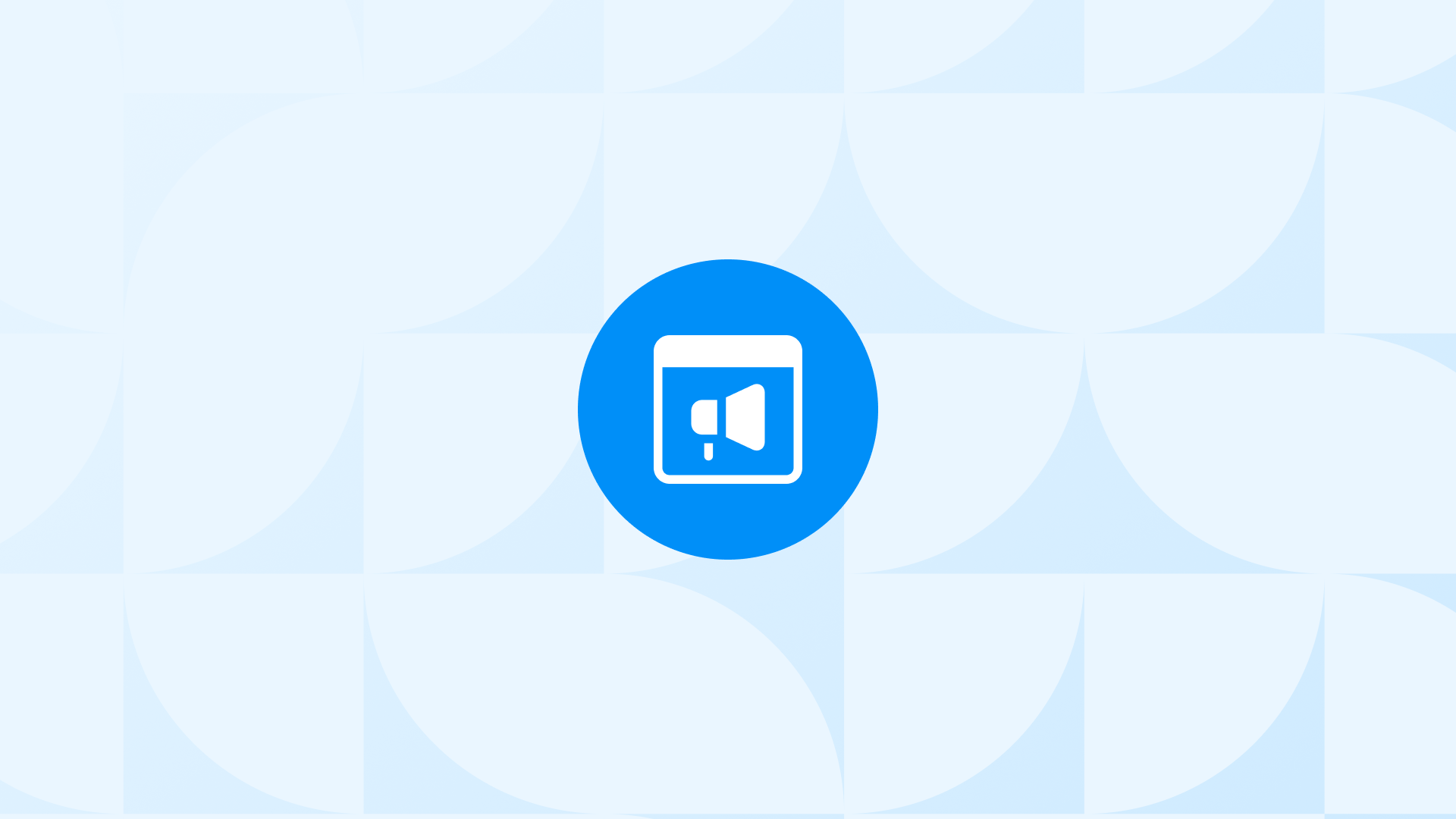The annual event Google hosts about the latest innovations across Search, YouTube, and Google Ads took place this May. Google Marketing Live 2025 focused heavily on one clear message:
“AI is here, and it’s already changing the rules of digital marketing.”
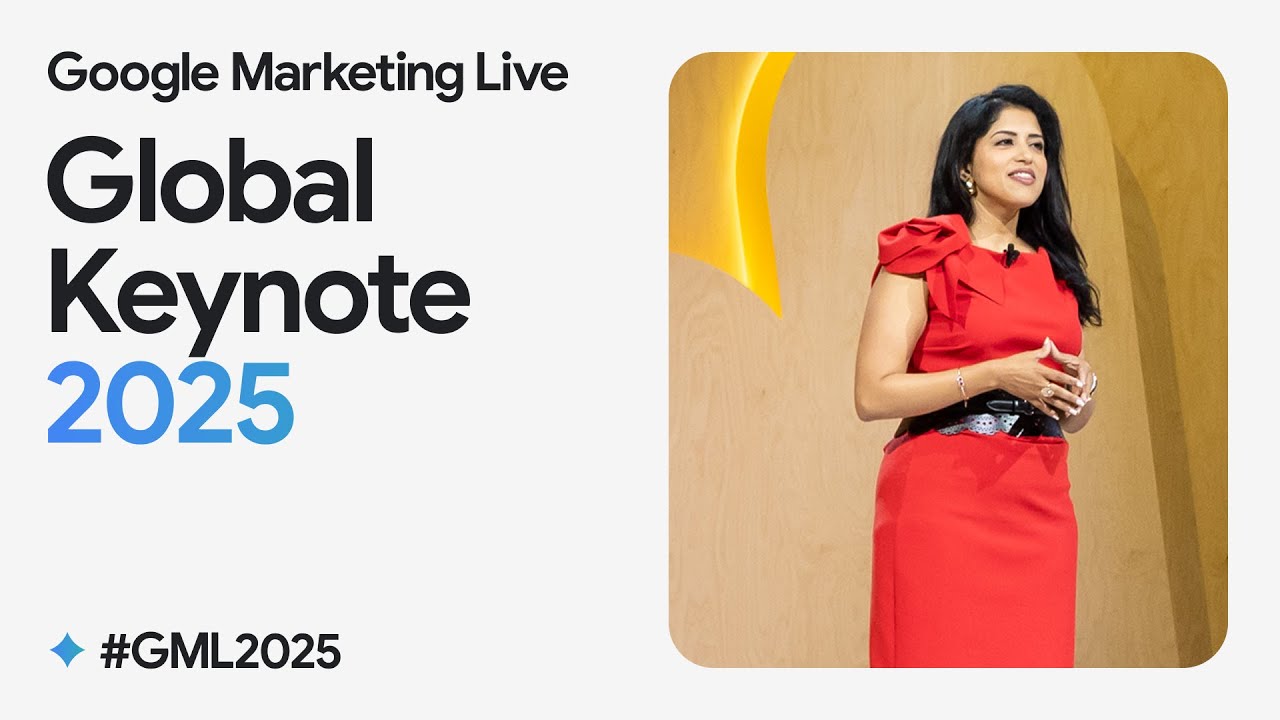
Source: Google Ads Youtube Channel
This year, Google introduced new tools and updates that aim to make ads smarter, faster to create, and easier to manage. The launch of creative tools like Veo and Imagen, combined with AI-powered ad placements in Search through AI Overviews and AI Mode, shows that automation is no longer optional.
In this post, you’ll cover:
- The biggest Google Marketing Live 2025 updates in Google Ads, Search, and YouTube
- What new tools like Veo, Imagen, Smart Bidding Exploration, and AI Max mean for advertisers
- How marketers can start using Google’s new AI-powered ad features today
Let’s dive in!
👉 Bonus Content: Working with AI in your campaigns? Don’t miss Google’s Guide to AI-Ready Marketing with tips on tracking, targeting, and privacy done right.
What Is Google Marketing Live 2025?
Google Marketing Live is Google’s yearly event where it shares what’s new in Google Ads, Search, YouTube, and other tools for advertisers. It’s mostly aimed at marketers and businesses who run ads on Google’s platforms.
The Google Marketing Live 2025 took place in May and put a strong emphasis on AI’s impact across the entire advertising workflow.
Google shared new features that automate every part of the ad process, from creating ads and setting bids to targeting and tracking results. Some updates improve existing tools, while others offer brand-new ways to run campaigns.
The main message of this year’s event was clear: Google is doubling down on automation, and advertisers will need to adapt to new ways of working.
👉 Watch the full Google Marketing Live 2025 keynote on YouTube
Key Takeaways for Marketers from GML 2025
Many marketers see GML 2025 as a big change into the advertising world.
Google is clearly moving toward an ad system that runs on AI, from campaign creation (AI Max), to bidding (Smart Bidding Exploration), to creative tools (Veo and Imagen).
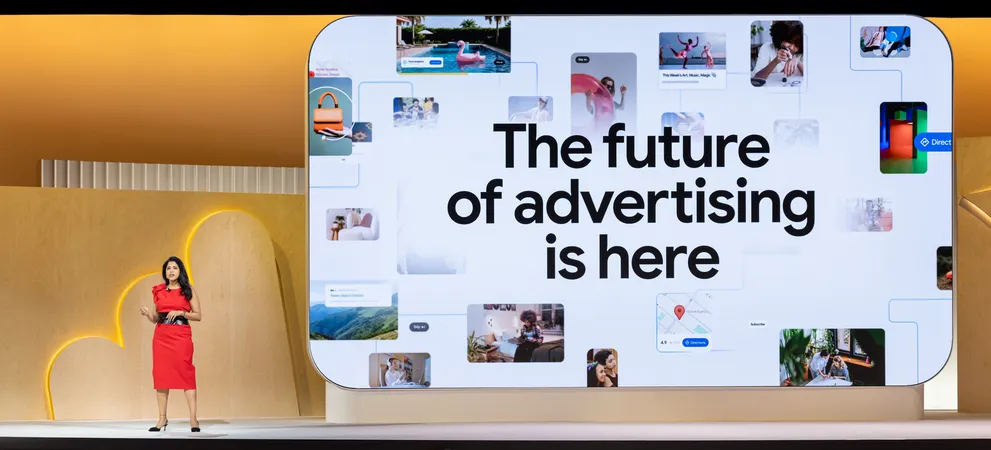
According to Vidhya Srinivasan, VP of Google Ads & Commerce, the focus is now on AI-powered ads that are timely, helpful, and built around how people actually search.
Some worry that relying too much on AI could mean losing control over how their budgets are spent or how their ads are shown. There’s excitement about what these tools can do, but also a need to better understand how they work behind the scenes.
What Google Announced at Google Marketing Live 2025
Google introduced a wide range of updates at this year’s event, all centered around making advertising more intelligent, more automated, and more scalable.
According to the latest statistics from Google, Google holds 81.95% of the global search engine market share — making these updates especially important for any business running digital campaigns.
Here’s a breakdown of the main updates from Google Marketing Live 2025, why they matter, and how you can start using them in your daily workflow:
Creative Tools Powered by Veo and Imagen
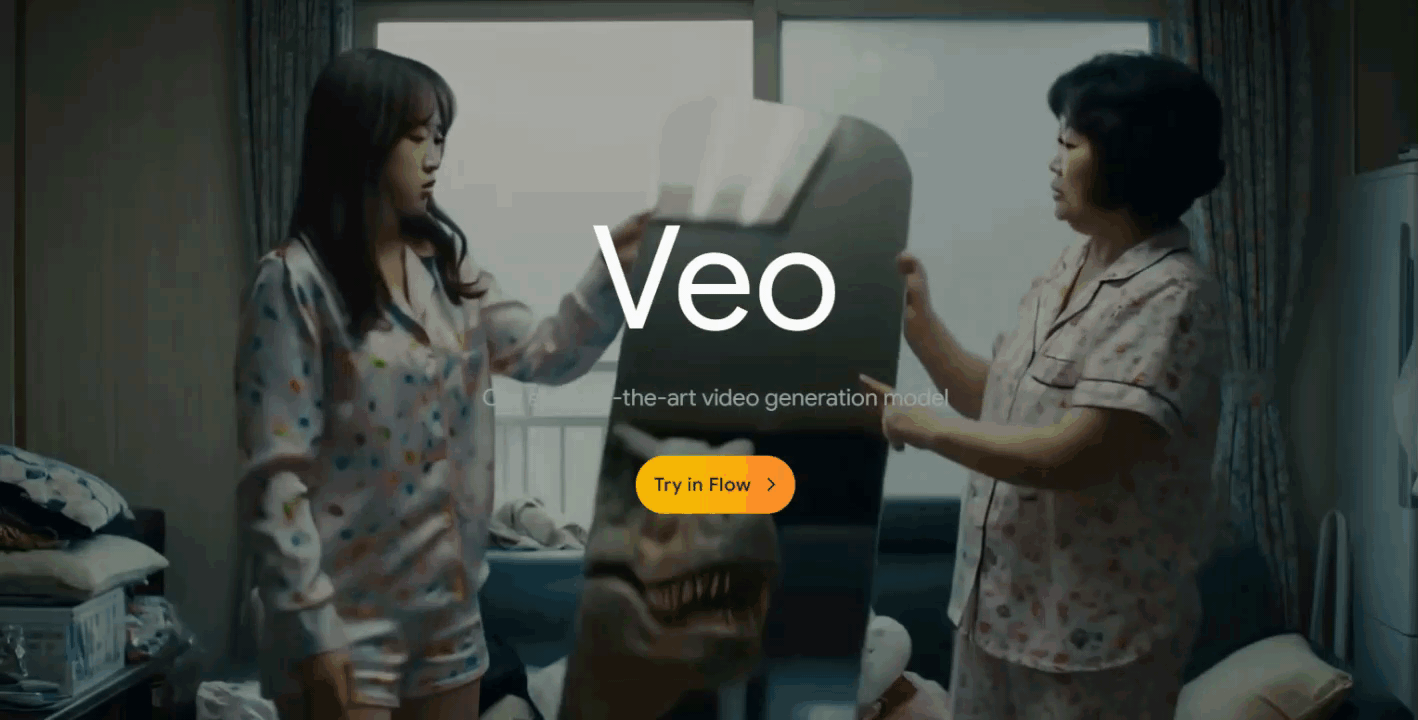
Google introduced two powerful AI-based creative tools: Veo for generating video assets and Imagen for generating images.
Both are now being integrated into Google Ads and Merchant Center to help advertisers create high-quality visuals faster and with fewer resources.
Creative production in Google Ads is becoming easier and faster:
- Generate videos using Veo based on prompts, scripts, or product info
- Create product or brand visuals with Imagen using text inputs or structured data
- Avoid long production timelines and design bottlenecks
Testing and scaling campaigns is more efficient with these AI creative tools:
- Quickly produce multiple versions of ad creatives to test headlines, visuals, and calls-to-action
- Adapt creatives to different formats (e.g. YouTube Shorts, Discovery Ads) without extra design work
- Improve performance in campaigns that rely on variety, like Performance Max
Small teams can now launch ads in Google Ads without needing extra help:
- No in-house design team needed to create professional-looking ads
- Built-in tools lower production costs and make it easier to experiment
- Level the playing field with larger advertisers who have more creative resources
How to Apply GML 2025 Features
- Use Veo and Imagen inside Google Ads or Merchant Center to generate ad-ready assets
- Test AI-generated creatives in Performance Max, Discovery, and Display campaigns
- Write clear product descriptions and structured prompts to improve output quality
- Create a reusable creative library to quickly launch or refresh campaigns
- Review outputs carefully and keep brand consistency in check before publishing
👉Bonus Content: Check out Shopify + ChatGPT: What to Know About AI-Powered Shopping — a quick look at how AI is changing the way people browse and buy on Shopify.
Smart Bidding Exploration In google Ads
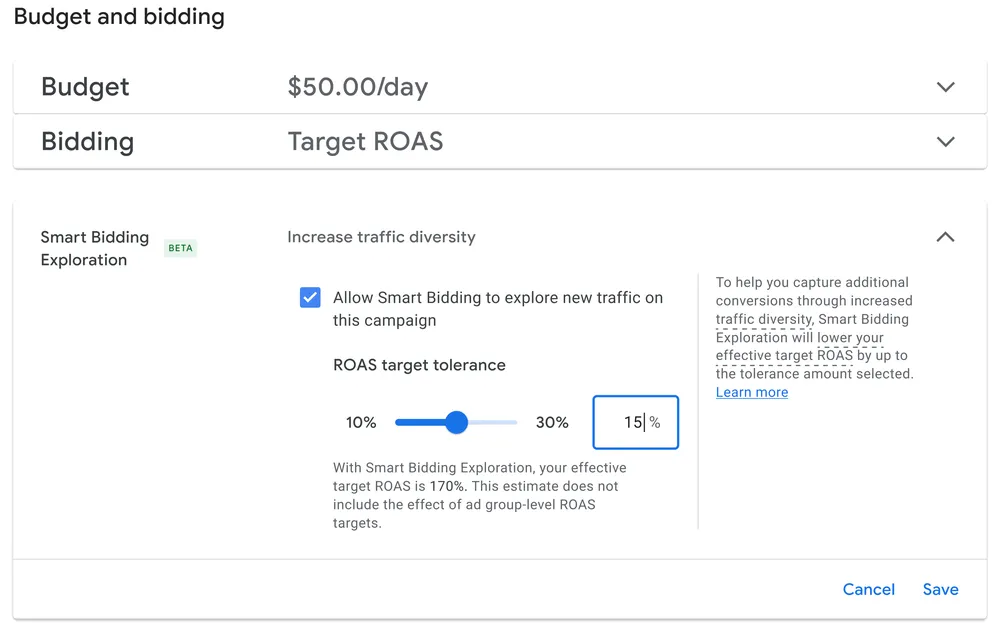
Announced at Google Marketing Live 2025, Smart Bidding Exploration is one of the major update to bidding in Google Ads in over a decade.
This feature expands how Google Ads finds new, high-performing search opportunities by going beyond your usual keywords and audience segments.
It’s designed to help advertisers appear in searches they may not have thought to target, but that are still likely to convert.
Smart Bidding Exploration shifts campaign strategy from manual control to intelligent discovery. Instead of focusing only on exact-match terms, Google Ads now uses AI to identify new patterns and intent signals that match your goals.
Smart Bidding is evolving into a discovery engine:
- Google Ads looks beyond your keyword list and analyzes broader intent signals
- Your ads can now show in searches you didn’t manually target but that are contextually relevant
- Google’s AI makes fast, real-time bidding decisions based on behavior, device, and timing
Performance optimization is becoming less manual:
- No more daily bid adjustments, Smart Bidding handles it dynamically
- The system learns over time which combinations of query, device, time, and ad work best
- Advertisers can focus more on strategy and creative, less on maintenance
This opens up more opportunities for growth:
- Smaller advertisers can benefit from Google’s scale without deep keyword research
- Larger accounts can uncover hidden conversion potential in underused segments
- The model rewards flexibility and good data, not micromanagement
How to Use Smart Bidding Exploration in Google Ads:
- Enable Smart Bidding Exploration in Search campaigns with solid conversion tracking
- Set clear optimization goals like Maximize Conversions or Target CPA, and give the system time to learn
- Use search term reports in Google Ads to see what new queries the system is exploring
- Avoid overly tight keyword restrictions, allow the AI room to explore and optimize
- Support the system with strong creative, clear messaging, and optimized landing pages
AI Max for Search Announcement At GML 2025
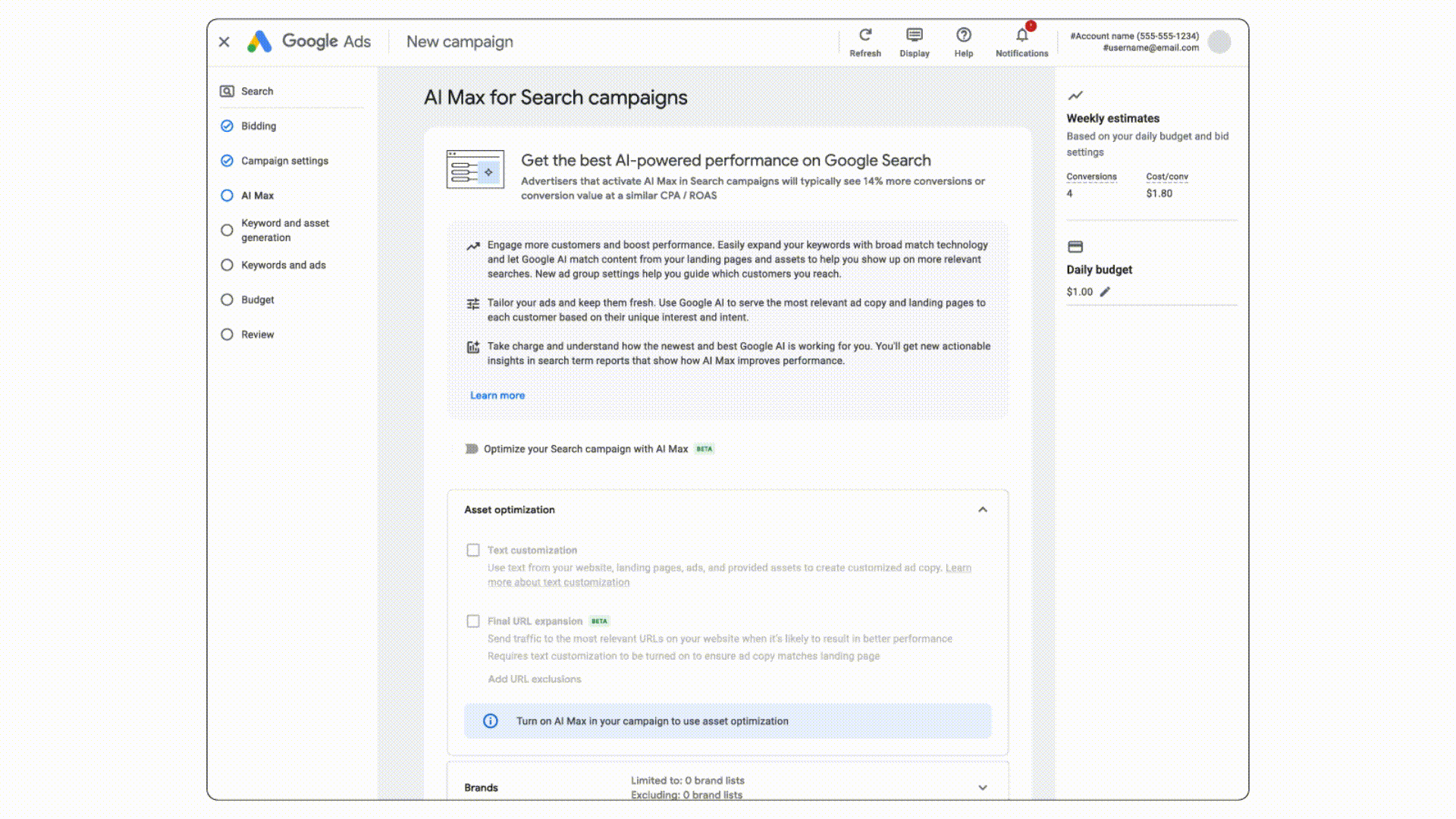
One of the major campaign innovations announced at GML 2025 is AI Max for Search.
This new campaign type is built entirely around Google’s AI systems.
It combines bidding, targeting, creatives, and placement decisions into a single streamlined setup that aims to deliver the best results with minimal manual input.
Think of AI Max as a step beyond Performance Max, but focused specifically on Search.
It’s designed to identify high-potential queries, serve the right creative, and optimize in real-time without requiring advertisers to build out detailed structures or keyword lists.
Campaign setup is becoming radically simplified:
- You provide goals, assets, and some targeting signals
- Google handles everything else, from ad placements to bid strategies
- It’s a plug-and-play option for advertisers who want results with fewer moving parts
AI Max uses full-funnel data across Google:
- Uses real-time search trends, user behavior, and context
- Focuses on intent-based targeting, not traditional keyword matching
- Dynamically tests creative combinations to find what drives conversions
It’s ideal for performance-focused advertisers who trust automation:
- Small advertisers can launch Search campaigns without deep platform knowledge
- Larger advertisers can scale across markets and product lines without building from scratch
- Works best with strong conversion tracking and accurate first-party data
How to Use AI Max for Search Effectively:
- Use AI Max for specific conversion goals like leads, sales, or app installs
- Make sure Enhanced Conversions or offline conversion tracking is fully set up
- Provide high-quality assets (headlines, descriptions, images if supported), the system will mix and match to find top performers
- Monitor overall performance, but resist the urge to over-optimize too soon, AI Max needs time and data to perform
- Combine with other Google Ads products like Merchant Center or audience signals to strengthen results
👉 Bonus Content: Turn prompts into product photos! Explore real ecommerce use cases for ChatGPT’s image tools, plus tips and templates to try today.
Agentic Capabilities - Personalized AI In Google Ads

One of the more future-focused announcements at GML 2025 was the introduction of agentic capabilities in Google Ads.
These are AI-driven assistants built directly into the platform, designed to help marketers handle campaign setup, optimization, and strategy guidance, almost like having a virtual ad manager working alongside you.
The idea is to make Google Ads campaign management easier, especially for small teams or advertisers without deep technical experience. These agents don’t just suggest ideas, they take action, based on goals and data you provide.
Campaign management in Google Ads is becoming more collaborative:
- AI agents recommend and implement changes, not just suggest them
- You can ask questions like “how can I improve my campaign?” and get real, usable answers
- Acts like a strategist, helping manage budgets, targeting, bids, and creative decisions
Workflows are simpler for time-strapped advertisers:
- Campaign setup is conversational, describe your goals in plain language
- Tasks like adjusting bids or pausing underperforming ads are automated
- The system improves continuously based on performance data
👉Bonus Content: Ecommerce Ad Tracking Guide: Advanced Solutions for Shopify
Agentic tools give smaller teams more power inside Google Ads:
- You can launch advanced campaigns without a full-time ad manager
- Reduces the chance of missing optimizations or falling behind on platform updates
- Even experienced advertisers can offload routine tasks and focus on high-impact strategy
How to Use Agentic Tools in Google Ads:
- Try using Google Ads’ conversational interface or new planning tools powered by AI agents
- Describe your campaign goals clearly and provide strong inputs (audience, product, value prop)
- Let the system handle routine adjustments and review performance insights it surfaces
- Treat it like a partner, ask it for ideas, next steps, or areas to improve
- Keep ownership of creative direction and campaign goals, but trust the agent to handle execution support
Other Anouncements From GML 2025: Performance and Measurement Improvements
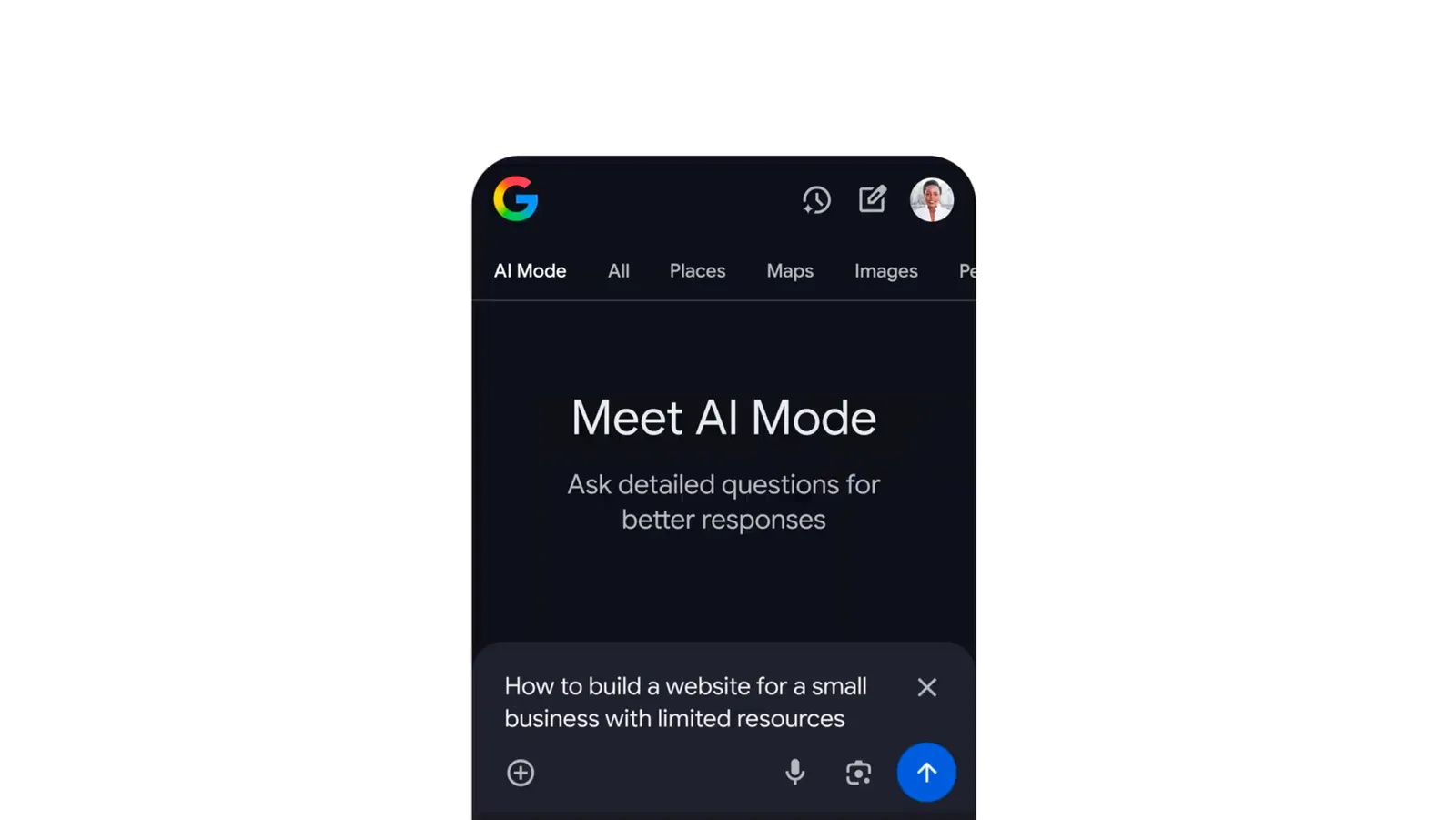
Alongside new campaign types and creative tools, Google Marketing Live 2025 introduced major updates focused on measurement, attribution, and reporting in Google Ads.
These updates are meant to help advertisers better understand where conversions come from, how campaigns are really performing, and how to use first-party data more effectively, especially in today’s privacy-first environment.
As Google Ads becomes more automated, accurate tracking is more important than ever.
These new tools give marketers more visibility into performance and help make smarter, data-driven decisions.
Measurement is becoming more integrated and intelligent:
- New AI-powered tools are improving how conversions are tracked across channels
- Attribution models are getting smarter, especially for cross-device and cross-channel journeys
- First-party data is now more central to campaign performance than ever
Google is pushing for better data quality:
- Enhanced Conversions and Consent Mode are critical for accurate tracking
- Merchant Center and app campaigns are gaining stronger integration with measurement tools
- Performance Max is now getting more detailed reporting, including channel-level performance breakdowns
Marketers will get more clarity, if they set things up right:
- You’ll be able to see which channels are driving results inside blended campaigns
- Conversion paths will be clearer, helping you refine creative and targeting based on what actually works
- But all of this depends on having strong data foundations in place
How to Use These Measurement Updates in Google Ads:
- Make sure Enhanced Conversions and Consent Mode v2 are properly implemented on your site
- Consolidate conversion actions in Google Ads so that the system can optimize effectively
- Use the new Performance Max channel breakdowns to identify where your budget is performing best
- Set up offline conversion imports or server-side tagging if you want more accuracy across long customer journeys
- Build a strong first-party data strategy, upload customer lists, connect CRM data, and track user behavior cleanly
Conclusion: Announcements From Google Marketing Live 2025
Google Marketing Live 2025 made one thing clear: the future of advertising is automated, AI-driven, and already in motion. From new campaign types like AI Max to creative tools like Veo and Imagen, Google is reshaping how ads are created, managed, and optimized.
For marketers, this shift means less manual work and more focus on strategy, inputs, and data quality. The tools are getting smarter, but how well they perform still depends on how well you use them.
If you’re running Google Ads in 2025, now is the time to:
- Learn how AI features like Smart Bidding Exploration and agentic tools work
- Start using creative automation to speed up content production
- Build strong first-party data and tracking foundations
Read More:
- How to Improve Your Shopify GA4 Tracking in 2025
- Fixing Too Much Direct Traffic in Google Analytics: Analyzify Server-Side Tracking
- Best AI Automation Tools: Features and Pricing Comparison [2025]
- The Best 10 Ecommerce Platforms for Selling Online in 2025
- Shopify Markets & SEO – What You Need to Know
- 15+ Best-Selling Digital Products to Sell on Etsy in 2025
- AI Chatbot Builders That Save You Money in 2025































